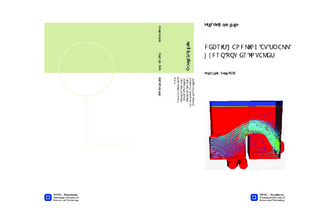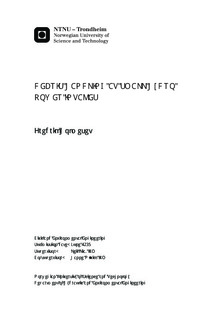| dc.contributor.advisor | Lia, Leif | nb_NO |
| dc.contributor.advisor | Nøvik, Hanne | nb_NO |
| dc.contributor.author | Holmeset, Fredrik | nb_NO |
| dc.date.accessioned | 2014-12-19T11:31:47Z | |
| dc.date.available | 2014-12-19T11:31:47Z | |
| dc.date.created | 2013-09-19 | nb_NO |
| dc.date.issued | 2013 | nb_NO |
| dc.identifier | 649588 | nb_NO |
| dc.identifier | ntnudaim:9582 | nb_NO |
| dc.identifier.uri | http://hdl.handle.net/11250/232554 | |
| dc.description.abstract | In this study the handling of debris in small hydro power intakes is assessed by evaluating the concept of back flushing with a horizontally fixed trash rack. The concept of back flushing is to reverse the flow over the trash rack for a short period of time in order to detach and evacuate clogged debris through a flushing pipe or gate. In this study the concept of back flushing with a horizontal trash rack is evaluated for two different designs; a one chamber design and a two chamber design. The one chamber design is based on H. Brekke?s conceptual idea. The two chamber design is also based on H. Brekke?s idea but it is also inspired by Bergedammen. Bergedammen is an intake designed with two chambers making it possible to continue power production while back flushing one chamber at the time. The efficiency of back flushing as well as the hydraulic performance during normal operation is mainly evaluated using numerical modelling and a CFD-software. The concept of back flushing, general intake hydraulics and computational fluid dynamics (CFD) is covered by the literature study in this thesis. The evaluation of the back flushing concept is initiated by a physical demonstration model with two chambers. The demonstration model is built and tested for flushing efficiency and performance during normal operation. The following numerical tests are performed on 4 different model designs. The first model illustrates a full scale one chamber design. The second model illustrates a full scale two chamber design. The third model is identical to the demonstration model. The forth model is designed as a result of the demonstration model and the previous numerical models, where important model parameters were identified. The important model parameters for effective flushing and hydraulic performance during normal operation is identified as the height of the weir, the vertical position of the trash rack, the length of the model and the amount of water available for flushing. The numerical analyses evaluate the flushing efficiency by assessing the velocity distribution over the trash rack. The hydraulic performance of the models during normal operation is evaluated by assessing streamlines, head loss and turbulent kinetic energy levels (TKE) by the outlet. During flushing the most important parameter is the height between the top of the weir and the trash rack. A high weir results in an even velocity distribution over the trash rack. A low weir results in uneven velocities with higher velocities along the weir. During normal production the length of the model and the height of the weir are important parameters affecting both the total head loss and TKE-values. The results achieved by the numerical modelling should be validated, as further research, on a scale model designed and built in the lab. The test program for the scale model is presented in this study. | nb_NO |
| dc.language | eng | nb_NO |
| dc.publisher | Institutt for vann- og miljøteknikk | nb_NO |
| dc.title | DEBRIS HANDLING AT SMALL HYDRO POWER INTAKES | nb_NO |
| dc.type | Master thesis | nb_NO |
| dc.source.pagenumber | 121 | nb_NO |
| dc.contributor.department | Norges teknisk-naturvitenskapelige universitet, Fakultet for ingeniørvitenskap og teknologi, Institutt for bygg, anlegg og transport | nb_NO |

